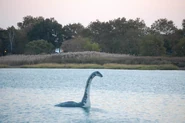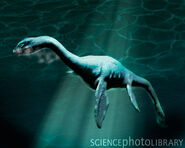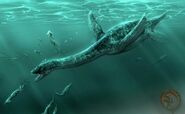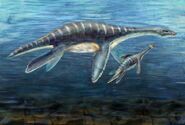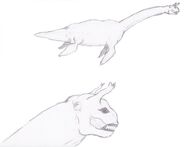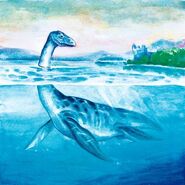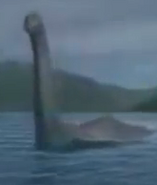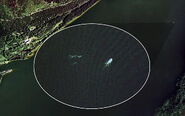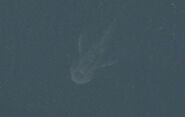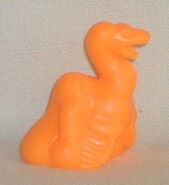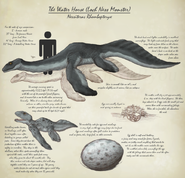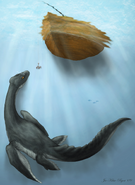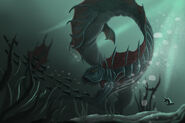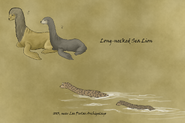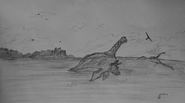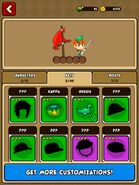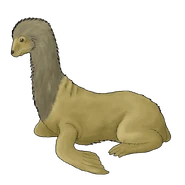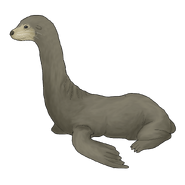
The more accurate Nessie interpretation.
The Loch Ness monster, also known by the nickname Nessie, is probably the creature that most often leaps to mind when ordinary people think about cryptozoology: the study of animals that may or may not exist. Nessie is virtually a symbol of cryptozoology. This creature has probably been the object of more sustained media attention than any other individual type of cryptid, with the possible exception of Sasquatch.
What is the Loch Ness monster? If it exists, it is probably not one animal, but a bunch of animals of the same species (Plesiosaur). This idea is supported by sightings of multiple "monsters" at the same time, and by simple ecology. If Nessie is an animal, it had to have a mother, and at one point there had to have been a viable breeding population of the species. Only a few people think Nessie is a single animal, such as a sea serpent that somehow became trapped in Loch Ness. The typical Nessie does roughly resemble the average sea serpent, but it lives in the biggest freshwater lake in Scotland instead of the ocean.
Witnesses tend to describe an animal with sleek, rubbery blackish-gray skin, about twenty feet long. Nessie usually has the serpentine body that is typical for sea serpents and lake monsters, furnished with humps along
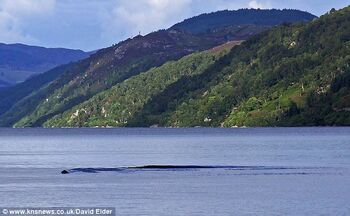
Recent video of Nessie that clearly shows a elongated black object slithering through the water.
its length, and one or more sets of paddles (or sometimes, stumpy legs). Nessie's head is often described as roughly horse-shaped, it may have a straggly mane running down its neck, and some witnesses report small horns, especially those who see the Loch Ness monster from close up. Sometimes, witnesses report a smaller, rounded, turtle-like head. This head is the one that seems to appear in most of the famous Nessie photos. The idea of horns may sound ridiculous, but they would make sense if the Loch Ness monster is actually a zeuglodon, a weird primitive whale, because the zeuglodons were only a few steps removed from the mesonychids, ungulate predators, and ungulates often have horns.

Nessie.
The first serious wave of Nessie sightings came in the 1930s and they have continued ever since. Before the wave of sightings that started today's fad, there were older legends of water dragons and kelpies in Loch Ness
(a kelpie is a magical aquatic horse that is often thought to be a shapeshifter). However, these older legends were much more variable in how they described the appearance of Nessie, so most researchers do not rely on them much, simply noting that they exist as being a reason to suppose that the Loch Ness Monster is much more than a recent fad. The Loch Ness Monster also has been recently sighted near the famous loch ness in which it was spawned as of 2014 Janurary 14th.

